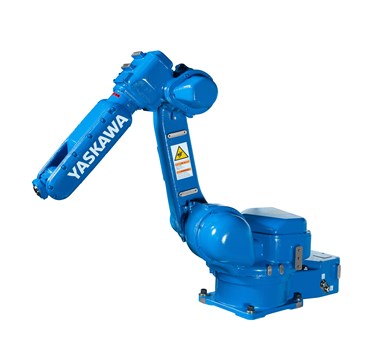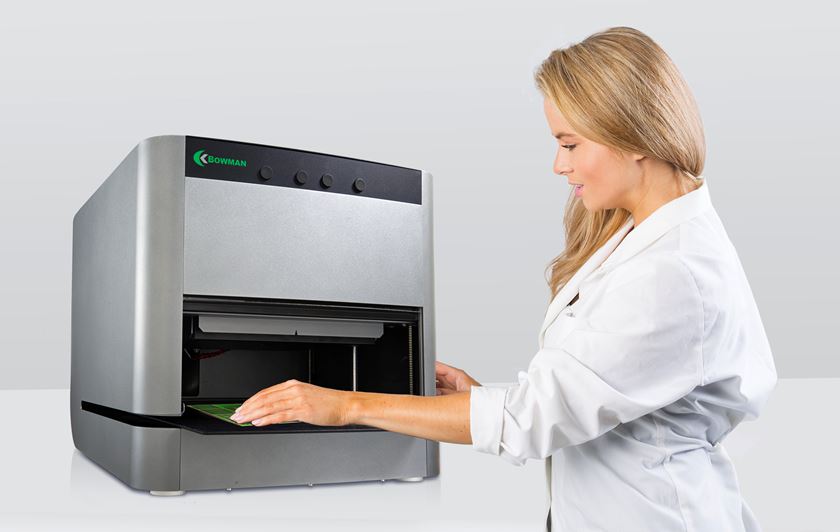New Robot for Painting Applications Launched
Yaskawa Motoman MPX1400 engineered for things from painting appliances to automotive instrument panels
#automotive

The MPX1400 offers a horizontal reach of 1,256 mm, a vertical reach of 1,852 mm and a speed of 1.5 m/sec.
Photo Credit: Yaskawa Motoman
As demand for products picks up and as the availability of workers trends down, robotic automation becomes more appropriate.
Yaskawa Motoman (Miamisburg, Ohio) has introduced a new painting robot, the six-axis MPX1400, that is targeted at painting multiple small parts in a single setup, with applications ranging from home appliances to automotive parts.
The robot has a 1,256 mm horizontal reach and 1,852 vertical reach. It can be floor-, wall- or ceiling-mounted. An objective of the design: space savings.
In addition to the work envelope, another reason why it can be used to process multiple parts is its speed: 1.5 m/sec with ±0.1 mm repeatability.
The robot, which has a straight wrist with a 5-kg payload capacity, can be fitted with a variety of spray guns and small bells. As Motoman doesn’t provide its own painting application equipment, the gear can come from an array of suppliers.
This robot is a direct replacement for the EPX1250 that the company had offered. The MPX1400 has the same base mounting and wrist bolt patterns as the predecessor.
The MPX1400 works with the DX200-FM controller which is loaded with application-specific software for painting, including the coordination of the robot with the paint applicator, trigger delays, air calibrations, and valve timing. It supports networks including EtherNet, EtherNet IP, CC-Link, and DeviceNet.
RELATED CONTENT
-
Zinc Phosphate: Questions and Answers
Our experts share specific questions about zinc phosphate and pretreatment
-
Preventing Solvent Pop
Preventing solvent pop on an industrial paint line...
-
Masking for Surface Finishing
Masking is employed in most any metal finishing operation where only a specifically defined area of the surface of a part must be exposed to a process. Conversely, masking may be employed on a surface where treatment is either not required or must be avoided. This article covers the many aspects of masking for metal finishing, including applications, methods and the various types of masking employed.


.jpg;width=70;height=70;mode=crop)













